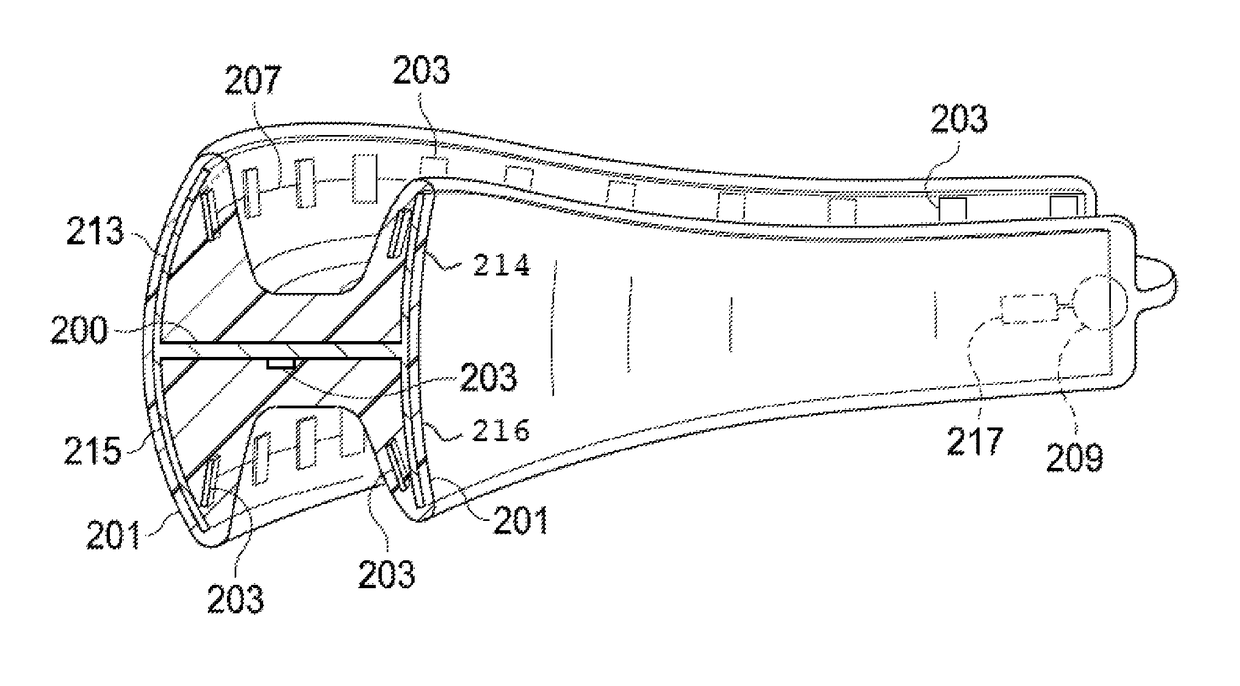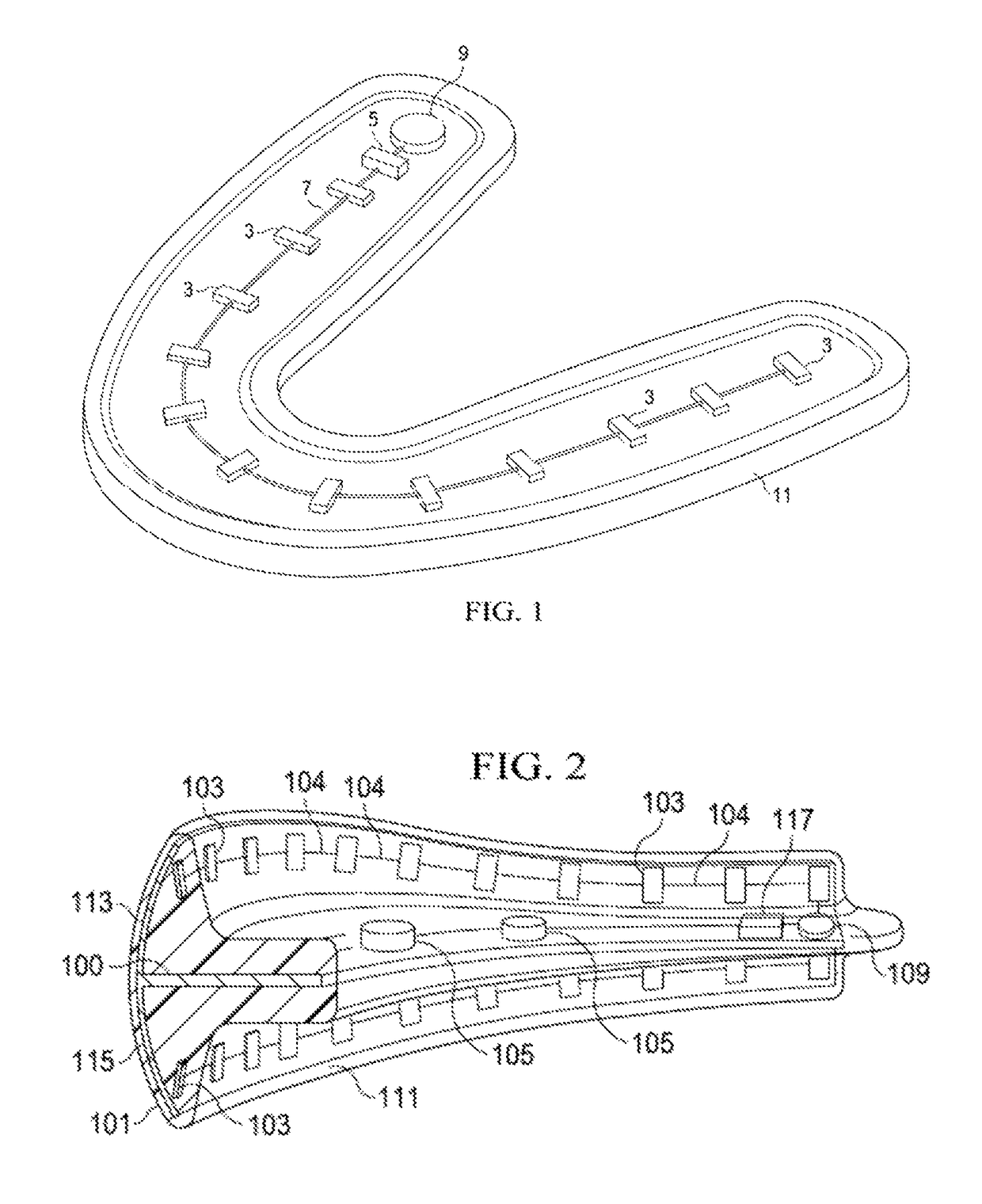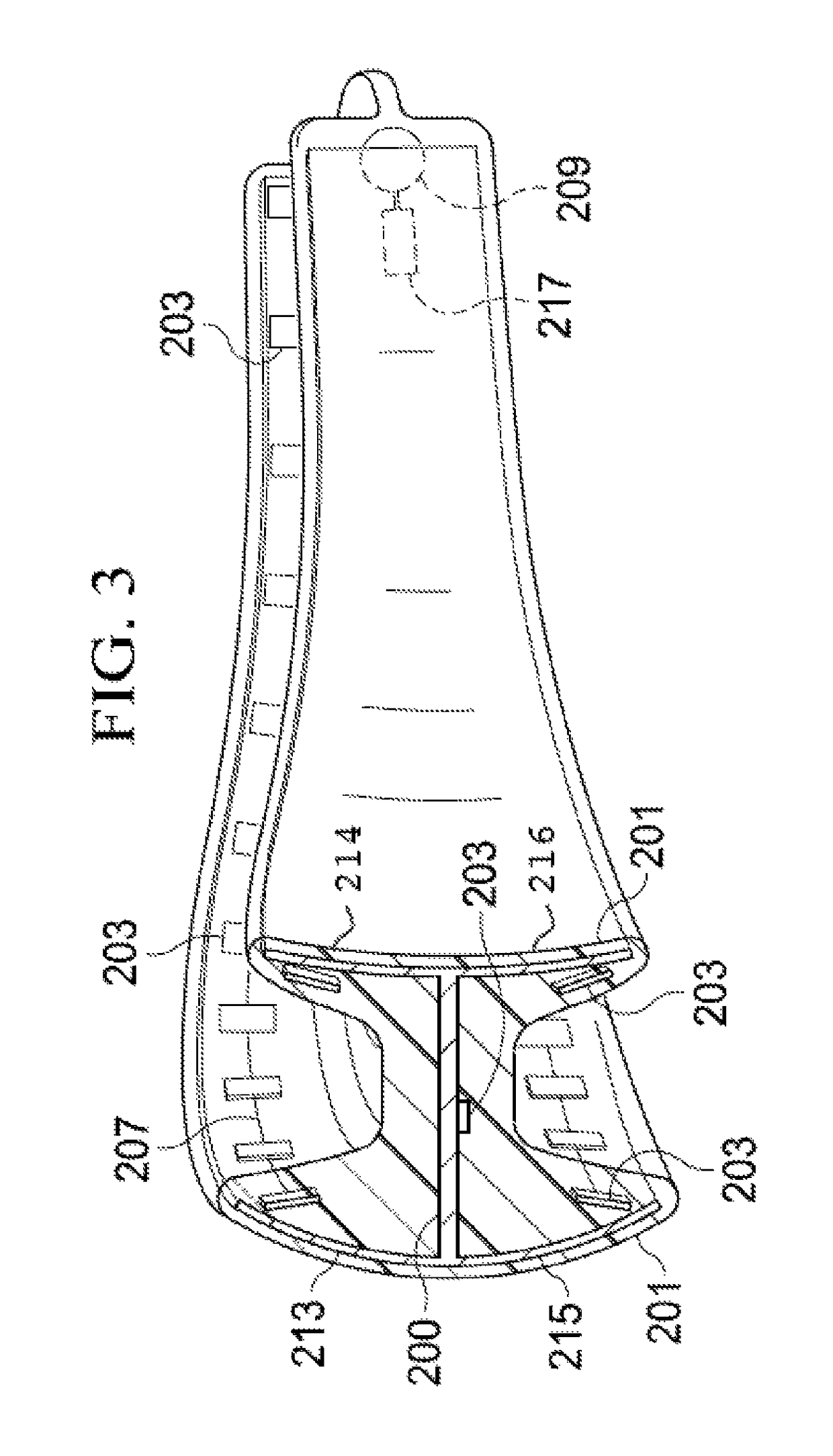Laser orthodontic devices
a laser and orthodontic technology, applied in the field of laser devices, can solve the problems of unattainable other technologies, unsatisfactory success rate of widely accepted approaches, and high degree of spatial and temporal coherence of laser light, so as to reduce the profile, prevent drooling, and maximize patient compliance
- Summary
- Abstract
- Description
- Claims
- Application Information
AI Technical Summary
Benefits of technology
Problems solved by technology
Method used
Image
Examples
Embodiment Construction
[0083]The following examples are illustrative only and not intended to limit the invention.
[0084]FIG. 1 shows a simple flat, U-Shaped bite plate 11 having LEDs 3 and on / off switch 5 plus wires 7 connected the LEDs 3 to the battery 9 and other components. The entirety of the bite plate 1 has a coating 11 (preferably transparent or at least IR transparent) that hermetically seals the bite plate. The user bites the plate 1, activating switch 5, so that LEDs 3 emit light, thus speeding orthodontic remodeling and reducing pain.
[0085]This simple completely intraoral embodiment can also be provided with vibrators, which can use the same or a separate on- / off switch. An separate switch may be preferred, as the time needed for light stimulation may be significantly less than the 20 minutes needed to biological response to vibration. Alternatively, a small chip embedded in the bite plate can control timing, and the same on / off switch can be used for both modes of operation.
[0086]FIG. 2 shows ...
PUM
 Login to View More
Login to View More Abstract
Description
Claims
Application Information
 Login to View More
Login to View More - R&D
- Intellectual Property
- Life Sciences
- Materials
- Tech Scout
- Unparalleled Data Quality
- Higher Quality Content
- 60% Fewer Hallucinations
Browse by: Latest US Patents, China's latest patents, Technical Efficacy Thesaurus, Application Domain, Technology Topic, Popular Technical Reports.
© 2025 PatSnap. All rights reserved.Legal|Privacy policy|Modern Slavery Act Transparency Statement|Sitemap|About US| Contact US: help@patsnap.com



